Естественные науки. Рубрика в журнале - Бюллетень науки и практики
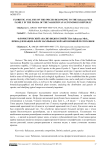
Статья научная
The study of the Salicaceae Mirb. species common in the flora of the Nakhchivan Autonomous Republic was conducted and their floristic analysis was performed. In the flora of the autonomous republic, 17 Salicaceae species belonging to 2 genera were identified, 9 species were assigned to the genus Salix L., and 8 species to the genus Populus L. Types of areas: boreal areal type (7 species), xerophilous areal type (4 species), Caucasian areal type (4 species) and desert areal type (1 species). The areal type was not determined for one species. This family is of great interest both in terms of biological diversity and ecological significance. It was established that the greatest species diversity of the family is found in the middle mountain zone, and a small part is found in the low and middle mountain zones, as well as in the subalpine zone. At present, the issues of adjusting botanical-geographical and historical plant systems, analyzing the distribution and genesis of species, and clarifying typical ranges are extremely important.
Бесплатно
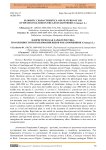
Статья научная
Hawthorn (Crataegus) is a plant consisting of various species of thorny shrubs or small trees belonging to the Rosaceae family. The genus Hawthorn (Crataegus L.) has 20 species in the flora of Azerbaijan and 20 species in the Nakhchivan Autonomous Republic: Crataegus pontica C.Koch., Crataegus orientalis Pall. ex Bieb., Crataegus meyeri Pojark., Crataegus szowitsii Pojark., Crataegus pentagyna Waldst. & Kit., Crataegus pseudoheterophylla Pojark., Crataegus cinovski Kassymova., Crataegus sanguinea Pall., Crataegus curvisepala Lindm., Crataegus caucasica C. Koch. Hawthorn species are found in various ecological zones, including mountainous, flat and semi-desert areas. The climatic conditions of each region affect the phenological stages of plant development. In the Nakhchivan Autonomous Republic, hawthorn is found in almost all altitude zones (800-2500 m). The greatest amplitude of distribution belongs to the species Crataegus orientalis. It is found in areas from the foothill zone to the subalpine zone (900-2250 m). In the middle zone, the species C. cinovskisii, C. szovitsii, C. Tournefortii, C. pojarkoviae and C. pontica are predominantly common. However, in some cases, the distribution zone of the species C. pontica goes down, and the species C. pojarkoviae rises to the high-mountain zone. The species Crataegus caucasica, C. rhipidophylla, C. pseudoheterophylla and C. zangezura are found almost from the low-mountain zone to the subalpine zone, and the species C. atrosanguinea and C. eriantha are found in the low-mountain and middle-mountain zone. The distribution zone of the species C. meyeri sometimes reaches an altitude of 2350 m. The flower lump of the hawthorn species, which is used as a food and medicinal plant, is used in the treatment of cardiovascular diseases and to regulate heart rhythm. Ripe fruits are also useful for lowering blood pressure in folk medicine. The fruits and flowers of hawthorn are used in medicine to treat cardiovascular diseases, circulatory problems and high blood pressure. The plant is rich in flavonoids, antioxidants and tannins, so it strengthens the immune system and has an anti-inflammatory effect. Hawthorn is also used as an ornamental plant.
Бесплатно
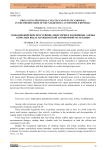
Статья научная
In the period from 2017 to 2022, ciliated protozoa and testate amoebae were studied in freshwater ecosystems of the Nakhchivan Autonomous Republic. 110 species of ciliates and 65 species of amoebae were identified. The species diversity of ciliates in freshwater is almost twice as high as in soil. The differences in species diversity between aquatic and soil amoebae are relatively small. The need for standardization of the methods used by researchers is emphasized. Further studies of these groups of protozoa are necessary to obtain more accurate conclusions about their ecological role, relationships, and their importance in various biological processes.
Бесплатно
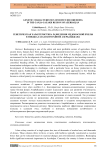
Genetic characteristics of honey bee breeding in the Ganja-Gazakh region of Azerbaijan
Статья научная
Beekeeping is one of the oldest and most profitable sectors of agriculture. Since ancient times, humans have bred, propagated, and maintained honey bees ( Apis mellifera L.). The favorable soil and climatic conditions, along with the rich flora of Azerbaijan, create an ideal environment for the development of beekeeping. One of the challenges in bee breeding research is that honey bees mate in the air, often at considerable distances from their colonies. This complicates controlled breeding efforts. To address this issue, selection specialists are exploring artificial insemination techniques and the establishment of controlled mating zones. This article examines the development of beekeeping in Azerbaijan, with a particular focus on honey production in the Western region. Additionally, it explores the most effective modern approaches to bee breeding, especially in the context of increasing resistance to adverse environmental factors, which has become a critical priority in contemporary apiculture.
Бесплатно
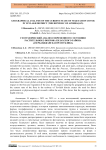
Статья научная
The distribution of 176 plant species belonging to 27 families and 75 genera in the wild flora of the area was determined during the research conducted in Yevlakh district area in 2023-2025. A flora conspectus, identified during the research, was developed for the species, which included the taxonomic structure, life forms, geographical and areal types, ecological groups and endemism of the area’s flora. It was found that the Poaceae, Chenopodiaceae, Asteraceae, Fabaceae, Cyperaceae, Salicaceae, Polygonaceae and Rosaceae families are represented by more species in the area. The research also determined the species composition and structural characteristics of the phytocenoses found in the vegatation cover of Yevlakh district, revealing that the area’s flora includes desert, semi-desert, meadow, forest, swamp and other plant types. It was determined that recent global ecological problems, including anthropogenic factors, have a direct impact on the flora and vegetation of the area. In this regard, studying the geographical analysis of the current state of the flora in the territory of Yevlakh district creates the need for future geobotanical or phytosociological research within the area. This shows that the ongoing work is highly relevant.
Бесплатно
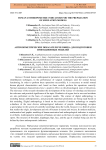
Human anthropometric indicators for the preparation of simulation models
Статья научная
Normal human anthropometric parameters are used in the development of medical rehabilitation techniques, in the performance of surgical techniques used for normal human functioning. In order to perform these operations successfully, it is necessary to model normal human physical characteristics and, based on these models, perform the operations correctly. Normal anatomical characteristics have a positive effect on the physiological state of the person. The relevance of the research stimulates the development of the science of valeology and increases the relevance and practical significance of the topic. Prosthetics of organs lost in wars and accidents are also performed on the basis of computer models. The science of digital anthropology is modeling human anthropometrics, and practically important predictions are being made based on this modeling. Digital anthropology is based on the research of modern technology to compile a database of the most diverse anthropological indicators of people. Anthropology occupies a special place in the system of scientific knowledge about the world, because it is a field of science that studies the origin, development and role of humans in nature and society. In modern medicine, mathematical and graphic modeling of human anatomical and anthropological indicators is required in all fields. Anthropometric indicators of humans are taken as the basis in surgery, military science, sports. The structure of shoulders, diaphragm, hips, face, and the age of a human being can also be defined by these anthropometric indicators.
Бесплатно
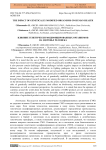
Impact of genetically modified organisms on human health
Статья научная
Investigates the impact of genetically modified organisms (GMOs) on human health. It is noted that the use of GMOs is increasing yearly worldwide. While gene technology, which has entered our lives through the creation of genetically modified organisms, shows benefits, it also presents certain challenges. These challenges include negative impacts on distribution and balance, toxic effects on plants, difficulties in fighting pathogens due to the development of antibiotic-resistant genes, gene transfers, and an increased risk of allergic reactions due to GMOs, all of which raise relevant questions about genetically modified organisms. It is highlighted that in recent years, biotechnology and the use of genetically modified organisms (GMOs) developed through biotechnological research methods are among the topics of most interest worldwide. Based on the information obtained from the research, the article explores the potential benefits, harms, and risks of genetically modified organisms, their effects on biodiversity, socioeconomic and legal dimensions, as well as consumer perspectives. In conclusion, it is stated that since the opinions of scientists around the world about the benefits and harms of GMO products are not unanimous, it would be more appropriate to consider the favorable natural conditions in our country for the cultivation of agricultural products and use ecologically clean food products.
Бесплатно
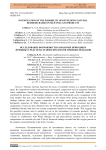
Investigation of the Possibility of Developing Natural Remedies Based on Mud Volcano Products
Статья научная
Volcanic mud has long been the focus of scientific interest as a natural therapeutic agent. Its composition includes microelements and organic components such as syngenetic bitumen, resins, asphaltenes, humic substances, certain enzymes, and fulvic acids. Scientific studies have confirmed the presence of bactericidal substances and other biologically active compounds in the mud samples that may exert beneficial effects on the human body during treatment. Research findings indicate that the organic composition of volcanic mud shares similarities with the therapeutic properties of White Naftalan oil. As part of the study, the elemental and phase composition of breccia mud obtained from the Pirekeshkul mud volcano was analyzed. It was established that the mud does not contain components harmful to human health. This suggests that the specified volcanic mud is suitable for use in the formulation of cosmetic products. During experimental procedures, various cosmetic ointments were developed using breccia mud from the volcano in combination with White Naftalan oil and plant-derived essential oils, as well as compositions of essential oils with T-46 oil. Research findings revealed that the oxygen present in the samples existed primarily in the form of oxides.
Бесплатно
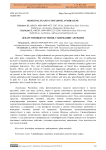
Medicinal plants containing anthracene
Статья научная
Various types of phytochemicals are present in plant parts such as bark, stem, roots, and other plant components. The distribution, chemical composition, and use of anthracene derivative-containing plants growing in Azerbaijan were investigated. Anthraquinones can be used as agents that have an active effect against malignant tumors and stimulate immunity against new malignant derivatives. Oxy- and oxymethylanthraquinones of fennel have antispasmodic and diuretic effects, and the content of calcium and magnesium phosphates in them ensures the fragmentation and removal of urinary stones from the body. Methyloxyanthraquinone derivatives are present in the bark, leaves, shoots, and fruits of Rhamnus cathartica. Freshly picked pods contain anthraglycoside frangulioriside, which oxidizes and turns into glucofrangulin when stored in pods for 1 year. Rhubarb root and its extracts have a laxative effect, increasing intestinal peristalsis. Aloe is used for skin care.
Бесплатно
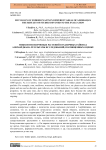
Статья научная
Both cultivated and wild fodder plants are the main group of plants necessary for the development of animal husbandry. Although it is impossible to give a specific number about the number of species of fodder plants in Azerbaijan, there is no doubt that their number of species is expressed in hundreds. Thus, the number of species of annual grasses in the CIS includes up to 1000 species. As it is known, some species mentioned above as fodder plants also carry other qualities. For example, corn, sunflower, wormwood, three-leaf clover, etc. plants are also medicinal plants and are used as diuretics, pain relievers, etc. in folk medicine. It is widely used as a tool with properties. At the same time, due to these properties, these plants have become the subject of various aspects (botanical, pharmacological, mycological, etc.) studies, and this situation is still ongoing.
Бесплатно
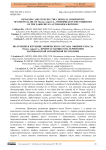
Статья научная
Extraction of essential oil of Thymus vulgaris L. and analysis of its chemical composition were carried out. Samples of Thymus vulgaris L., widespread in the mountainous regions of the Nakhchivan Autonomous Republic, were collected. After drying the obtained plant samples, the essential oil was obtained in laboratory conditions by hydrodistillation. The component composition of the obtained essential oil of Thymus vulgaris L. was analyzed using gas-liquid chromatography. Based on the results, it was found that the essential oil of Thymus vulgaris L. contains α-pinene, β-pinene, myrcene, carene, linal, caryophyllene, terpinene, citronellol, N,N-dimethylacetamide, alpha-terpineol, estragole, camphene, myrtenol, nerol, geraniol, camphor, citronellyl butyrate, alpha-terpenyl acetate, geranyl oleate, geranyl acetate, cedrol, thymol. The essential oil of Thymus vulgaris L. has high chemical quality. The essential oil has the potential for use in pharmacology and cosmetology due to its antibacterial and antioxidant properties.
Бесплатно
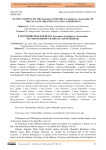
Статья научная
The article presents data on the species belonging to the subfamily Ennominae (Geometridae) collected in the Greater Caucasus region within Azerbaijan. The distribution areas of 28 species belonging to 18 genera (Abraxas - 1 species, Ligadia - 1 species, Colotois - 1 species, Erannis - 1 species, Ennomos - 2 species, Semiothisa - 4 species, Thefrina - 2 species, Cabera - 2 species, Zamacra - 1 species, Gnophos - 2 species, Triphosa - 1 species, Emarturgia - 1 species, Selenio - 2 species, Campaeo - 1 species, Elicrinia - 1 species, Opistograptis - 1 species, Calospilos - 2 species) from the subfamily Ennominae of the family (Geometridae) of the Greater Caucasus were noted. Representatives of the subfamily Ennominae (Geometridae) were first noted for the Azerbaijani part of the Greater Caucasus region.
Бесплатно
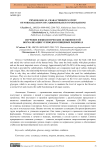
Physiological characteristics study of normalization of carbohydrates in food rations
Статья научная
Carbohydrates are organic substances with high energy, enter the body with food and satisfy the various needs of the human body. They enter the body mainly with plant products and are the most important source of energy. Approximately half (56-58%) of the energy needed by the body is provided by carbohydrates. Carbohydrates are compounds made up of carbon, hydrogen and oxygen. Here, the relationship between hydrogen and oxygen is the same as in water molecules. That is why they are called carbohydrates. During physical labor, the need for carbohydrates increases. They are also involved in plastic forming processes. Carbohydrates increase the amount of glucose in the blood and increase the amount of glycogen in the liver and muscles, being included in the composition of cells and tissues. Glucose is converted into reserve carbohydrates - glycogen, which is an energy reserve that serves to maintain the level of sugar in the blood at a normal level and ensures the stable functioning of all organ systems.
Бесплатно
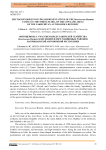
Статья научная
Discusses the participation of representatives of the Brassicaceae Burnett. family in the spring flora of the lowland areas of the Nakhchivan Autonomous Republic, using the road leading to the Julfa district as an example. The study provides information on species belonging to the genera Arabidopsis (DC.) Heynh. and Camelina Crantz within this family. Specifically, the species Arabidopsis thaliana (L.) Heynh. and Camelina sativa (L.) Crantz were identified along the road to Julfa. Data on the phytocoenosis formed by these species and its species composition are presented in tabular form. The study investigates the family, genus, life form, and ecological group of the species forming the phytocoenosis.
Бесплатно
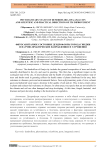
Статья научная
The dendroflora of Ganja city includes the general composition of trees and shrubs naturally distributed in the city and used in greening. This flora has a significant impact on the ecological state of the city, its microclimate and the health of residents. The phytosanitary state of trees and shrubs used in greening reflects the health status of plants distributed in the area, their resistance to diseases, pests and environmental factors. From a phytosanitary point of view, exhaust gases and industrial waste cause a decrease in the quality of soil and air. This, in turn, creates stress in plants and reduces their resistance to diseases. In urban areas, tree species that are not suitable for the climate and soil are often damaged and stop developing. At this time, fungal, bacterial, viral diseases and pests develop, leading to the destruction of vegetation.
Бесплатно
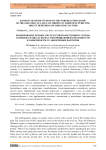
Статья научная
The ability of aquatic ecosystems to self-purify is closely dependent on many natural factors. The purpose of the study is to assess the self-purifying ability of surface waters for pollutants along the coastal zone of the Caspian Sea (in the territory of Azerbaijan) under the influence of abiogenic factors - climatic, hydrodynamic, hydro chemical, etc. The system analysis revealed a general pattern : in general, the self-purifying ability of river systems along the Caspian coastal zone increases in the direction from south to north. In order to preserve water quality in river systems, it is important to develop a set of measures to protect biodiversity in these coastal terrestrial ecosystems and water catchments (watersheds) on the northeastern slope of the Greater Caucasus.
Бесплатно
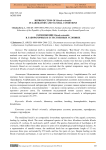
Reproduction of Hirudo orientalis in laboratory and natural conditions
Статья научная
The medicinal leech is included in Azerbaijan's "Red Book". For this reason, research has been conducted to increase leeches to protect the hirudofauna of our country. Three methods were used to breed it in the laboratory. The laboratory research was conducted at the Institute of Zoology. Studies have been conducted in natural conditions At the Mingachevir Scientific-Experimental Laboratory. In laboratory conditions, leeches were fed once a month, while those selected for reproduction were fed twice a month with the blood, spleen, and liver of large livestock. Based on our research, we can conclude that the optimal temperature range for the survival of Hirudo orientalis in laboratory conditions is 20-25°C.
Бесплатно
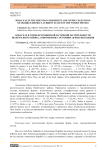
Статья научная
Rosaceae spreading in mountain-xerophytic and steppe vegetation of Shahbuz district flora, is presented in the article. Information is given on the taxonomic composition, life forms, ecological groups, geographical area types and classes of woody species of the family. According to the researches conducted by us, when we characterized the woody species of the mountain-xerophyte and steppe zone of the Shahbuz district flora belonging to the Rosaceae family by genera, it was found that Rosa - 21 (37.5%), Crataegus - 7 (12.5%), Pyrus - 7 (12.5%), Prunus - 6 (10.71%), Sorbus - 5 (8.92%), Cotoneaster - 4 (7.14%), Rubus and Spiraea - 2 (3.57%), Malus and there is - 1 (1.78%) species of the Pyracantha genus. Shrub plants, especially woody species of the Rosaceae family, occupy an important place in the structure of Shahbuz district flora. They are part of the bush steppes, form independent groups and form unique formations.
Бесплатно
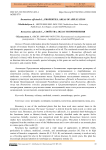
Rosmarinus officinalis L., properties, areas of application
Статья научная
Presents information about the botanical characteristics of rosemary, the regions and species of rosemary found in Azerbaijan, its chemical composition, fields of application, medicinal and therapeutic properties, as well as the preparation of its oil. The conducted research has revealed that there are two species of the genus Rosmarinus in nature: 1. Rosmarinus officinalis and Rosmarinus eriocalyx. In the flora of Nakhchivan Autonomous Republic, the species Rosmarinus officinalis is found, while Rosmarinus eriocalyx is encountered in the Mediterranean region. Based on literature data and our research, species belonging to this genus are used in medical, ecological, decorative, and cosmetic fields.
Бесплатно
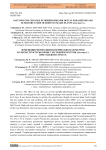
Статья научная
The effect of salt stress on several morpho-physiological characteristics of maize plants has been investigated in this study. Maize seedlings were treated with 0, 1, 2, and 3% NaCl for 5 days. It was shown that due to salinity, the growth traits (length of root and plant, fresh weight and dry weight of root and seedlings, leaf area, salt tolerance index, RWC, etc.) are significantly reduced. The relative water content in the leaves of the plant decreased gradually with increasing NaCl levels. High salt stress had a strong on root growth. Based on our results on the ultrastructure of the root obtained by electron microscopy, salinity slightly damaged the root anatomy.
Бесплатно

